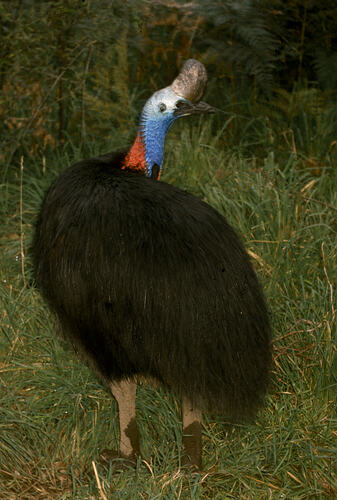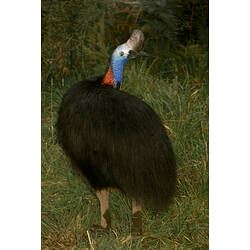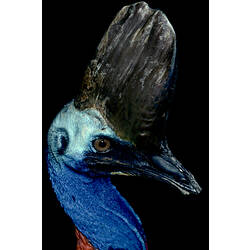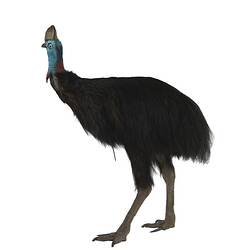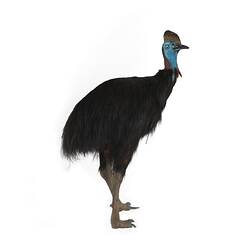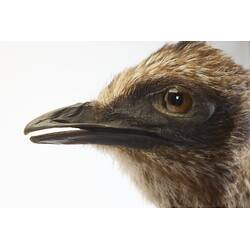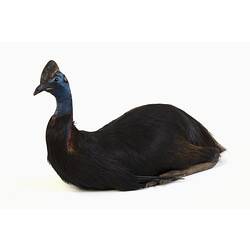General Description
A large-bodied flightless bird with a glossy black body. Head includes bare blue and pink parts with a prominent casque, or helmet, on the top of the head. Bill and casque brown with light brown legs. Up to 58.5 kg, 1.7 metres tall.
Biology
Cassowaries are polyandrous - females mate with multiple males in succession - an unusual behaviour for birds. Once a female has laid eggs in a male's nest, he alone incubates the eggs and raises the chicks. Chicks can take up to 9 months to reach independence.
Distribution
Australia, New Guinea; northern northeast Queensland
Habitat
Dense tropical rainforest
More Information
-
Animal Type
-
Fast Fact
The English and scientific names are derived from the Malay word for the bird - kasuari or kasavari. Males and female calls consist of loud and soft booms, grunts, roars and guttural coughs and hisses during the breeding season. Cassowary eggs are green but fade rapidly if exposed for long periods of time.
-
Brief Id
Large, heavy flightless bird with glossy black body feathers, naked, blue head with pink patches and prominent casque/helmet.
-
Colours
Black, Blue, Pink, Brown
-
Maximum Size
170 cm
-
Habitats
-
Diet
Omnivore
-
Diet Categories
Fruit, Fungi, Invertebrates, small vertebrates, Carrion
-
Endemicity
-
Conservation Statuses
CITES: Not listed, EPBC Act 1999: Endangered, FFG Threatened List: Not listed, IUCN Red List: Least Concern
-
Taxon Name
-
Common Name
Southern Cassowary
-
Kingdom
-
Phylum
-
Subphylum
-
Class
-
Subclass
-
Superorder
-
Order
-
Family
-
Subfamily
-
Genus
-
Species Name
casuarius
